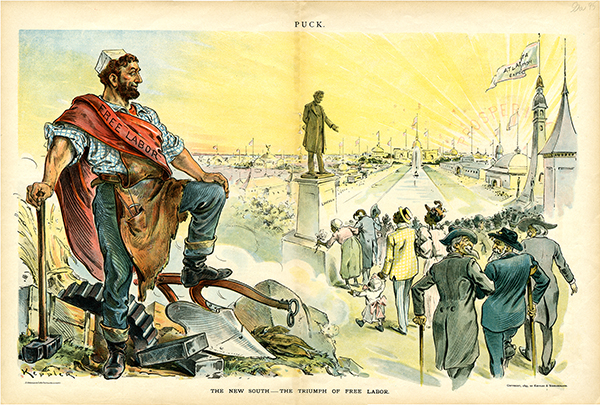The University of Georgia’s Hargrett Rare Book and Manuscript Library will take a closer look at Georgia’s carceral history in the new exhibit The New South and New Slavery: Convict Labor in Georgia, opening July 26 at the Richard B. Russell Building Special Collections Libraries. The display examines the forced labor of prisoners in the state from the start of the convict lease system in 1868 until the abolition of the chain gang in 1945.
In the aftermath of the American Civil War a massive labor shortage plagued an already crippled southern economy. The Thirteenth Amendment had freed thousands of enslaved people and outlawed forced labor except for use as punishment for a crime. Georgia, along with other southern states, exploited this loophole. In 1866 the General Assembly legalized the leasing of prisoners for profit to private individuals and companies. Under mounting pressure for reform, Georgia abolished the convict lease system in 1908. Soon after, state-run chain gangs became a standard scene along the roadsides of Georgia as prisoners worked to build and repair the state’s roadways.
The exhibit will use penitentiary reports, lease contracts, correspondence, and newspaper articles to expose the motivations of the businessmen and politicians who created these systems and to illuminate the lives of prisoners who toiled within them. Cultural productions, including autobiography, literature, film, and songs reveal the many ways prison labor has come to be represented in American memory.

Collection of Georgia Images, Hargrett Library
This illustration was meant to portray a changed, free South. In reality, the grounds for the Atlanta Cotton States Exposition were cleared largely by black prison labor.
Sidonia Serafini, a doctoral student in the University of Georgia’s Department of English, curated the exhibit during an internship in the summer of 2018. Serafini says that she gained some valuable skills during her summer project. “I learned how to tell a story through objects first and foremost and words second. And I enhanced my research skills, something I can use in planning future classes that I teach.”
The exhibit script and selected artifacts for the display have inspired faculty from UGA and Spelman College to co-create [the Georgia Incarceration Performance Project], a devised archives-to-performance collaboration with students and community partners. Collaborators will debut a finished production as part of the UGA Theatre season during the 2019 Spotlight on the Arts Festival on the UGA campus, and in the production seasons of Spelman Drama and Spelman Dance in February 2020.
The New South and New Slavery opens July 26. A free lecture from Dr. Mary Ellen Curtin will take place on Monday, September 16 at 5:30 p.m. in the auditorium of the Special Collections Building. The Hargrett Library Gallery is free and open to the public Monday through Friday from 8 a.m. to 5 p.m. and on Saturdays from 1 p.m. to 5 p.m. For more information about the exhibit contact Jan Hebbard at jhebbard@uga.edu or 706-583-0213.
